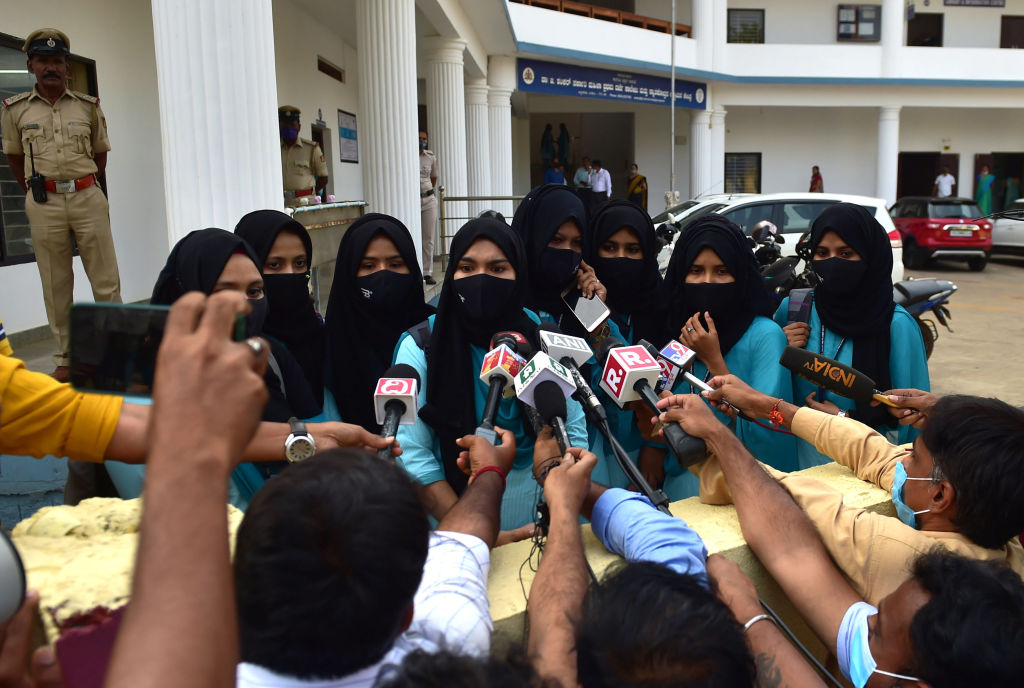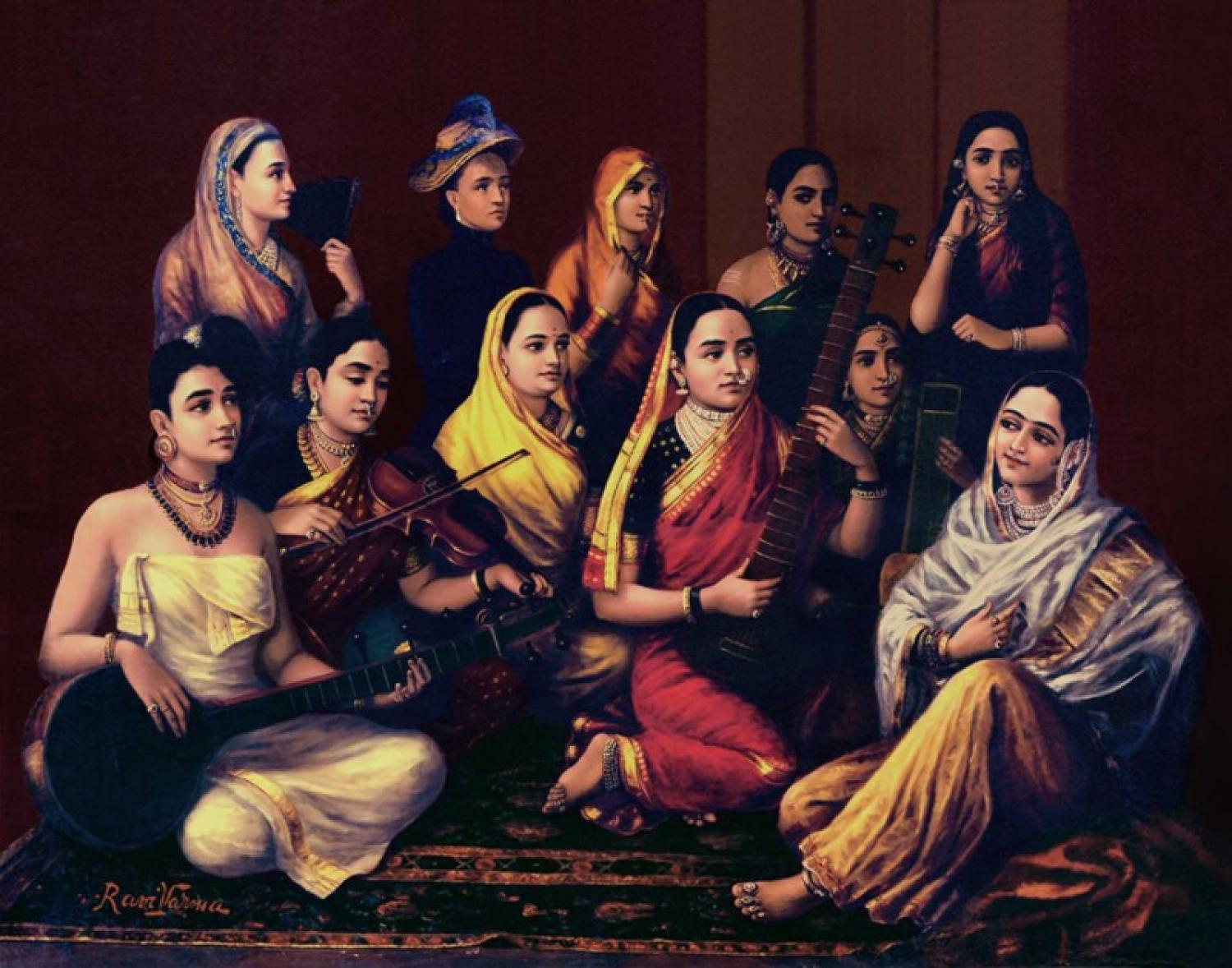India, with a 200 million-strong population of Muslims, has never really had a firm tradition of people wearing hijabs, burqas or niqabs. But the biggest sectarian row in the country this month is that over a mooted ban on hijabs, which began in a small town in a southern state, and is now apparently threatening to sway state elections up north.
Since December, a handful of Muslim teenage girls have been protesting outside their classroom in the coastal town of Udipi, in Karnataka state. They have not been permitted back inside as they insist on wearing their hijab, something local authorities say is against uniform policy.
The row has spread to other towns in the state and legal notices were filed, leading the state High Court to issue a temporary ban on religious clothing until it makes a final decision.
At issue is an apparent new uniform policy which outlaws head coverings and other religious garments, although it is important to note that the hijab has not actually been banned. The current debate revolves primarily around whether the hijab is a necessary part of what it means to be Muslim.
The story is being presented as a kind of inflection point in the ongoing sectarian tensions in India, however I’d argue that, as multi-layered and confusing as it is, the episode isn’t particularly a turning point at all – rather, it’s just another way to send a clear message to Muslims that they occupy a subordinate status, along with all the other behaviour that supports this (such as ongoing violent attacks against Muslims).

In particular, the hijab row in Karnataka has been linked to state elections that are underway in Uttar Pradesh. It is clear to most India watchers that the Bharatiya Janata Party is working steadily to make inroads into state politics – which operates vastly differently to national-level politics – and is considered to be leveraging the religious tensions in Uttar Pradesh. However there is no real evidence that there has been any impact. Uttar Pradesh anyway has its own deep religious divisions. It doesn’t need anyone else’s.
Flirting with hijab or burqa bans has long been a favoured tactic of Western liberal governments who want to tap into some populist anti-migrant sentiment among voters. It is not really about banning the garment – did anyone really think France would get away with abolishing the burkini? – but sending a message to a minority group that they are not respected nor wanted.
It truly doesn’t make sense in India anyway. In a country where women from numerous faiths choose to cover their hair, and where Muslim women are not legally compelled to do so, it’s hard to find the rationale. How is a headscarf inappropriate when I’ve seen holy men, or sadhus, walking down busy city streets, brazenly naked?
Orthodox Sikh women often choose to wear turbans; Marwaris from Rajasthan cover their hair with their dupatta, or scarf, even in front of family members. Women in north India’s “Hindu belt” regularly cover their hair and faces with the ends of their saris, even while at work in the fields. And conversely, the wearing of hijabs, burqas or niqabs has never been a requirement, nor even a particularly common custom, among Muslim women in India. Black robes have become a more frequent sight on the streets over the past 15 or 20 years, perhaps a sign of creeping Wahhabism in the country – but it is still far from the norm.
In a country where women from numerous faiths choose to cover their hair, and where Muslim women are not legally compelled to do so, it’s hard to find the rationale.
And maybe, this is the key point. Perhaps this issue is more nuanced than it seems at first glance. It has been reported that the girls at the centre of the dispute have appeared on their social media channels photographed without a headscarf – as of course, is their right, to wear whatever they want. But it indicates that they’re perhaps not particularly hard-line in their devotion to the hijab. Which begs the question, why now? It has also been reported that the protesting students are connected to a contentious Islamic group, the Popular Front of India (PFI), which has been vocal in its support of the girls. It adds up to the feeling that Muslims are active participants in resisting Hindutva and testing the issue.
Of the many and ever-increasing grievances of minority groups in India though, whether they be religious minorities, lower castes (officially referred to as Other Backward Classes, or OBCs), why is this the one that has gained the most attention and traction, and not violent attacks, forced conversions or the banning of industries associated with non-Hindus? The media attention the issue attracts doesn’t comfortably sit with how significant it is as a single issue. Attacks against Christians are on the rise, while violence against Muslims continues.
I would argue that it falls within the limits of what international media find acceptable: it’s visual, there is precedent from other parts of the world, it involves sympathetic young women as victims, and clear battle lines. It’s a made-for-live-television moment.
To date, the Karnataka High Court has not made a decision on whether to support a ban. But given India’s religious pluralism and tradition of all religions being able to express themselves freely through dress, it should be as acceptable for schoolgirls to cover their hair as it is for an adult man to wander down the street naked, in the name of religion.

